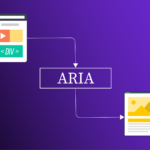As we navigate the complex landscape of accessibility regulations, two terms often come to the forefront: Section 504 and Section 508. While both are part of the Rehabilitation Act, they serve distinct purposes and have different implications for organizations. In this blog, we’ll explore the similarities and differences between Section 504 and Section 508, and what they mean for you.
The Common Thread: Promoting Accessibility
Before we dive into the specifics, it’s essential to understand the common goal of both sections: to promote accessibility and equal opportunities for individuals with disabilities. The Rehabilitation Act of 1973, which includes both Section 504 and Section 508, was a landmark legislation that aimed to remove barriers and ensure that people with disabilities have equal access to education, employment, and services.
Imagine a world where a talented student with a hearing impairment can’t participate in class discussions, or a skilled programmer who uses a wheelchair can’t access their office building. These are the exact scenarios that the Rehabilitation Act seeks to prevent.
Section 504: The Pioneering Regulation
Section 504, enacted in 1973, was a groundbreaking regulation that prohibited discrimination against individuals with disabilities in programs and activities receiving federal financial assistance. This section applies to a broad range of entities, including:
- Schools and universities
- Hospitals and healthcare providers
- Non-profit organizations
- Government agencies
Section 504 ensures that these entities provide equal access to programs, services, and benefits, and do not discriminate against individuals with disabilities. This includes providing reasonable accommodations, such as wheelchair ramps, Braille signage, and sign language interpreters, to ensure equal participation.
Consider Sarah, a college student with dyslexia. Thanks to Section 504, her university provides her with extra time on exams and access to text-to-speech software, allowing her to excel in her studies despite her learning disability.
Section 508: The Digital Revolution
Fast-forward to 1998, when Section 508 was enacted as an amendment to the Rehabilitation Act. This section specifically focuses on electronic and information technology (EIT), ensuring that federal agencies’ digital products and services are accessible to people with disabilities. Section 508 applies to:
- Federal agencies
- Contractors and vendors working with federal agencies
- Organizations receiving federal funding
Section 508 sets forth specific technical standards for accessibility, including website design, software applications, and telecommunications products. This means that federal agencies must ensure their digital platforms are accessible to individuals with disabilities, including those with visual, auditory, motor, or cognitive disabilities.
Imagine John, a visually impaired individual trying to file his taxes online. Thanks to Section 508, the IRS website is designed with screen reader compatibility, allowing John to navigate the site and complete his tax return independently.
Key Differences: Scope and Focus
So, what’s the main difference between Section 504 and Section 508? The scope and focus of each section are distinct:
- Scope: Section 504 has a broader scope, applying to a wide range of entities receiving federal financial assistance, while Section 508 is specific to federal agencies and their digital products and services.
- Focus: Section 504 focuses on non-discrimination and equal access in programs and activities, whereas Section 508 concentrates on the accessibility of electronic and information technology.
The Intersection: Overlapping Responsibilities
While Section 504 and Section 508 have distinct focuses, they do intersect. Federal agencies, for instance, must comply with both sections. This means ensuring that their digital products and services meet Section 508 standards, while also providing equal access to programs and activities under Section 504.
Picture Maria, a deaf federal employee. Her workplace complies with both Section 504 and 508, providing her with sign language interpreters for meetings (504) and ensuring that all internal software and communication tools have closed captioning options (508).
The Takeaway: Compliance and Beyond
Compliance with Section 504 and Section 508 is not only a legal requirement but also a moral imperative. By understanding the differences and similarities between these regulations, organizations can better serve individuals with disabilities, promoting a more inclusive and accessible environment.
In conclusion, Section 504 and Section 508 are two vital components of the Rehabilitation Act, working together to create a more accessible and equitable society. By recognizing their distinct roles and responsibilities, we can build a brighter future for all individuals, regardless of ability. As we move forward in an increasingly digital world, let’s challenge ourselves to think beyond mere compliance and strive for true inclusion in all aspects of life.

 5 Key Things to Look for When Choosing a PDF Accessibility Partner
5 Key Things to Look for When Choosing a PDF Accessibility Partner How Semantic Structure and Regions Improve Digital Accessibility
How Semantic Structure and Regions Improve Digital Accessibility Less ARIA, More Accessibility: Documenta11y's Guide to Cleaner Web Content
Less ARIA, More Accessibility: Documenta11y's Guide to Cleaner Web Content

